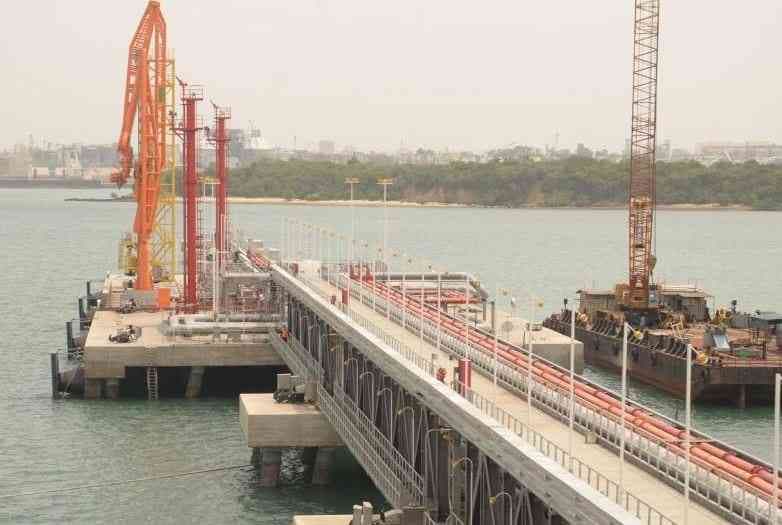We're loading the full news article for you. This includes the article content, images, author information, and related articles.
Kenya Ports Authority is fast-tracking major infrastructure and technology upgrades to avert congestion as the gateway to East Africa faces unprecedented cargo volumes ahead of the festive peak season, solidifying its role as a critical regional trade hub.

The Kenya Ports Authority (KPA) is accelerating a multi-billion shilling expansion and modernization programme at the Port of Mombasa to manage a significant surge in cargo volumes and preempt logistical bottlenecks during the upcoming peak season. Government officials confirm that projects valued at Sh41 billion are underway to bolster capacity, enhance efficiency, and solidify Kenya's position as the primary gateway for trade in East and Central Africa.
Recent data from KPA reveals a sharp increase in port activity. Between January and September 2025, the port handled 32.86 million metric tonnes of cargo, a substantial rise from the 29.97 million tonnes recorded during the same period in 2024, representing a 9.6% growth. Container traffic also grew by 6.2%, with the port handling 1.55 million Twenty-Foot Equivalent Units (TEUs) in the first three quarters of the year. This growth is attributed to expanding economies in the region and increased trade activity, which puts immense pressure on the existing infrastructure.
To address the rising demand, several key infrastructure projects are in progress. According to Transport Principal Secretary Mohamed Daghar and KPA Managing Director Captain William Ruto, construction of Berth 19B has commenced and is 19% complete as of late October 2025. This new berth is designed to add a capacity of 300,000 TEUs. Additionally, plans are in motion for the development of two more berths, 23 and 24, which will further increase the port's container handling capacity. The Japan International Development Agency (JICA) is reportedly being engaged for the implementation of Berth 23.
Beyond the main port, the construction of the first berth at the Dongo Kundu Special Economic Zone has also started. This project, part of the government's broader Vision 2030 plan, aims to create an industrial and logistics hub that will drive value-added exports and ease pressure on the port. These developments are critical, as logistics experts have warned that infrastructure expansion has previously lagged behind the rapid growth in cargo volumes.
Alongside physical expansion, KPA is investing heavily in technology to streamline operations. A major upgrade of the port's Terminal Operating System (TOS) is underway, which will introduce features like automated gate systems, equipment positioning systems, and barcoding to improve cargo clearance and reduce dwell times. The goal is to transition to full automation, simplifying processes and minimizing system downtimes for faster approval of documents. This digital transformation is seen as essential for enhancing the port's competitiveness.
The investment in modern equipment is also a key component of the strategy. In early 2024, the port procured new ship-to-shore gantry cranes at a cost of Sh4.1 billion ($31.5 million) to boost efficiency. These upgrades are intended to improve turnaround times for the 50-plus vessels the port is scheduled to handle in a typical 14-day period leading into the festive season.
The Port of Mombasa is a vital economic artery for Kenya and its landlocked neighbours, including Uganda, Rwanda, Burundi, South Sudan, and the Democratic Republic of Congo. An efficient port directly reduces the cost of doing business and enhances the overall competitiveness of the entire Northern Corridor trade route. The current expansion efforts are therefore crucial for attracting local and foreign investment and supporting regional industrial development.
The surge in cargo is also boosting the performance of the Standard Gauge Railway (SGR), which recorded its highest-ever monthly freight volume in the first quarter of 2025, underscoring the railway's critical role in evacuating cargo from the port to the hinterland. The government also plans to extend the SGR line from Naivasha to Kisumu and eventually to Malaba to further decongest the Northern Corridor. Complementing Mombasa's growth is the strategic development of Lamu Port as a transshipment hub for the LAPSSET corridor, which aims to create a second, alternative transport artery to Ethiopia and South Sudan.
As KPA races against time, the success of these expansion and modernization projects will be critical in determining whether the Port of Mombasa can navigate the challenges of the busy season and cement its status as the preeminent maritime hub in Eastern Africa.
Keep the conversation in one place—threads here stay linked to the story and in the forums.
Other hot threads
E-sports and Gaming Community in Kenya
Active 7 months ago
Popular Recreational Activities Across Counties
Active 7 months ago
The Role of Technology in Modern Agriculture (AgriTech)
Active 7 months ago
Investing in Youth Sports Development Programs
Active 7 months ago